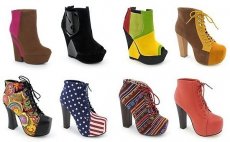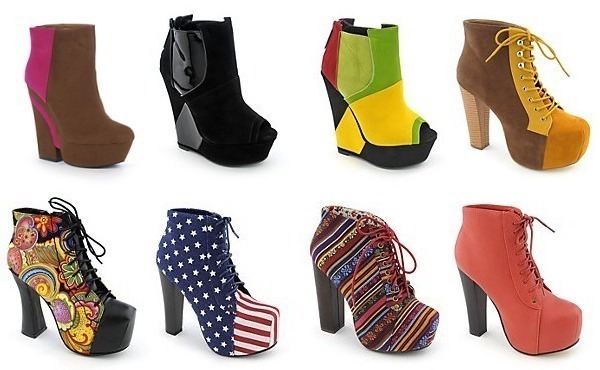Medical expert of the article
New publications
Orthopedic shoes by season
Last reviewed: 08.07.2025

All iLive content is medically reviewed or fact checked to ensure as much factual accuracy as possible.
We have strict sourcing guidelines and only link to reputable media sites, academic research institutions and, whenever possible, medically peer reviewed studies. Note that the numbers in parentheses ([1], [2], etc.) are clickable links to these studies.
If you feel that any of our content is inaccurate, out-of-date, or otherwise questionable, please select it and press Ctrl + Enter.

Orthopedic shoes according to the season are a great opportunity for your feet to feel healthier. But how to choose orthopedic shoes according to the season, because there are so many offers on the modern market! And what if you happen to choose something wrong - autumn orthopedic shoes can be radically different in their properties from half-boots with sheepskin, which should be worn in colder weather. So, more about shoes according to the season.

 [ 1 ]
[ 1 ]
Winter-autumn orthopedic shoes
Winter orthopedic footwear includes boots, shoes (insulated), half-boots. That's probably all.
Autumn orthopedic footwear – boots, shoes, half-boots, ankle boots, shoes. Almost the same, but with the addition of shoes, rather closed, deep and warm. What is characteristic of orthopedic footwear for the winter-autumn season? What properties will serve a person well, save not only from bad weather, but also from diseases?
So, the upper part of such shoes is leather, and breathable and water-repellent. Shoes of the winter-fall season should not restrict the foot, especially if it swells and swells. This is typical for people with diabetes, suffering from kidney or urinary tract diseases.
If the orthopedic shoes are laced, they should not restrict the foot, making it swell even more. Shoes for the cold season, which are made according to anatomically correct patterns, will make movement comfortable, the foot will not get tired for a long time.
Are you comfortable in this model?
To determine whether your foot is comfortable in a particular model of winter orthopedic footwear, you need to put on both boots or shoes and walk around the store for 15 minutes. If there is no discomfort, the shoes do not pinch and you like them, buy them. Such footwear is especially good for people who have to move actively all day or, conversely, stand for hours on end - sales agents, teachers, sellers, hairdressers. And also for those who quickly develop heel spurs, bunions, calluses.
Winter orthopedic shoes are good for children who run a lot (and almost all children run a lot). Weather is a decisive factor, because of which it is necessary to buy suitable orthopedic shoes with good protection. Please note: many children's orthopedic models of the fall-winter season have high backs that protect the ankle well. If you measure its height, the back will be about 2 cm higher than the ankle. This allows the ligaments of the foot to feel protection and support, they do not stretch. Bruises and sprains in such shoes are an extremely rare occurrence.
Such winter footwear is also good for preventing flat feet, which, according to statistics, affects 20 to 30 percent of children. Orthopedic footwear ensures the correct positioning of the foot, due to which the child's foot almost does not get tired during the day. And the depth of orthopedic footwear for winter-autumn is a decisive point. Shoes for the cold season should be deep enough to insert a thick warm insole, protect the foot from frost and cold wind, as well as rain. Such insoles make it possible to resist flat feet or stop the process of its development.
It is a big mistake to think that winter-autumn orthopedic shoes must necessarily be awkward, unfashionable, blunt-nosed, massive. Outwardly, they do not differ from ordinary fashionable and stylish shoes, except for the convenience of the shoe last and increased stability.
Spring-summer season
Orthopedic footwear for spring and summer includes different types of sandals and flip-flops, flip-flops, light shoes, and spring boots. They differ from autumn-winter footwear by their lighter construction. But the leather for such orthopedic footwear, as well as the insole, shoe last, and sole, should still be made of high-quality, durable material that ensures not only ease of wearing, but also stability and reliability.
Summer and spring orthopedic shoes with an open heel are clogs, sandals, open-toed shoes, and slippers. Models for men, women, and children are equally comfortable and high-quality. If such shoes have a closed toe, it gives a person the opportunity to either hide defects in the toes or protect them from damage. Especially the foot of a child who has to jump and run a lot during the day. Such shoes are very good for walking, and they can also be used as home shoes. The most striking representatives of summer-spring shoes for home use are flip-flops or ballet shoes.
Shoes with a correctly formed last provide good support for the foot and provide a cushioning effect, correctly form the foot, protecting a person from flat feet, and prevent the ankle from getting tired quickly.
Summer orthopedic sandals usually have a well-reinforced heel. It protects a man or woman from calluses and corns, fights heel spurs, reducing pain and discomfort. Orthopedic sandals usually come with comfortable insoles, as well as straps to adjust the size of the arch of the foot when it swells or, conversely, decreases in volume. This is especially good for pregnant women, people suffering from diabetes, flat feet, poor kidney function.
Summer clogs use a comfortable design with adjustable straps, closed toes and soft, comfortable insoles. Thick leather up to 3 mm provides excellent protection for the foot from damage and at the same time allows it to breathe.
| View | Dimensions (cm) |
|---|---|
| for men | 24.5—30.5 |
| for women | 21.0-27.5 |
| for boys (teenage) | 24.5—28.0 |
| for girls (teenage) | 22.5—25.5 |
| for school boys (school) | 20.5—24.0 |
| for school girls (school) | 20.5—23.5 |
| for preschoolers | 17.0—20.0 |
| small children | 14.5-16.5 |
| booties | 9.5-12.5 |
| hussars | 10.5—14.0 |
Remember that when choosing orthopedic shoes for the season, you are not paying for quality materials and a comfortable design, but for the health of your feet and body as a whole. The right orthopedic shoes are shoes made of genuine leather. Well-made shoe models bend easily, they are flexible, strong, provide air flow to the feet and evaporation of excess moisture. In no case should you buy so-called medical shoes, the parts of which are rubber, leatherette, plastic - they have nothing in common with orthopedic shoes.

